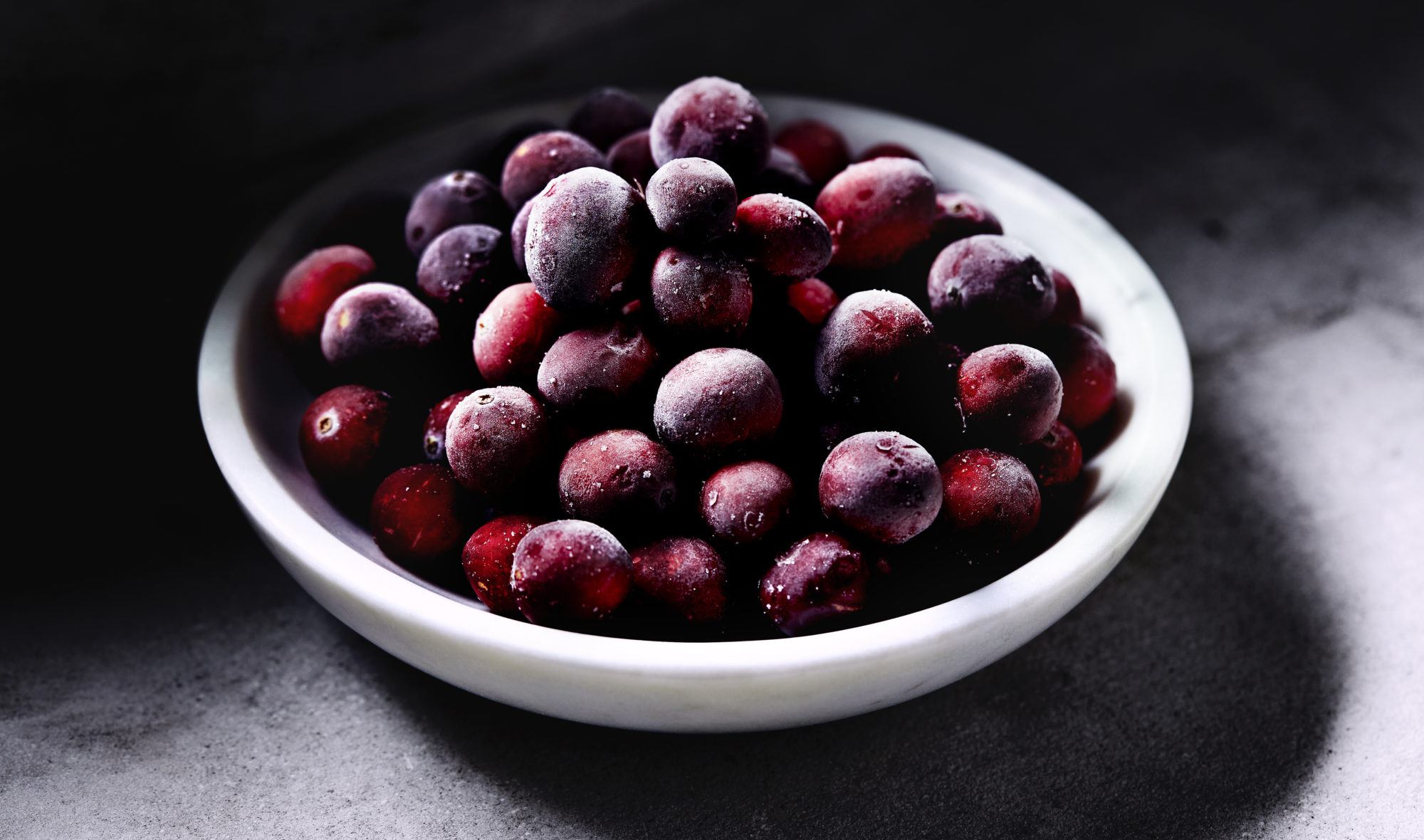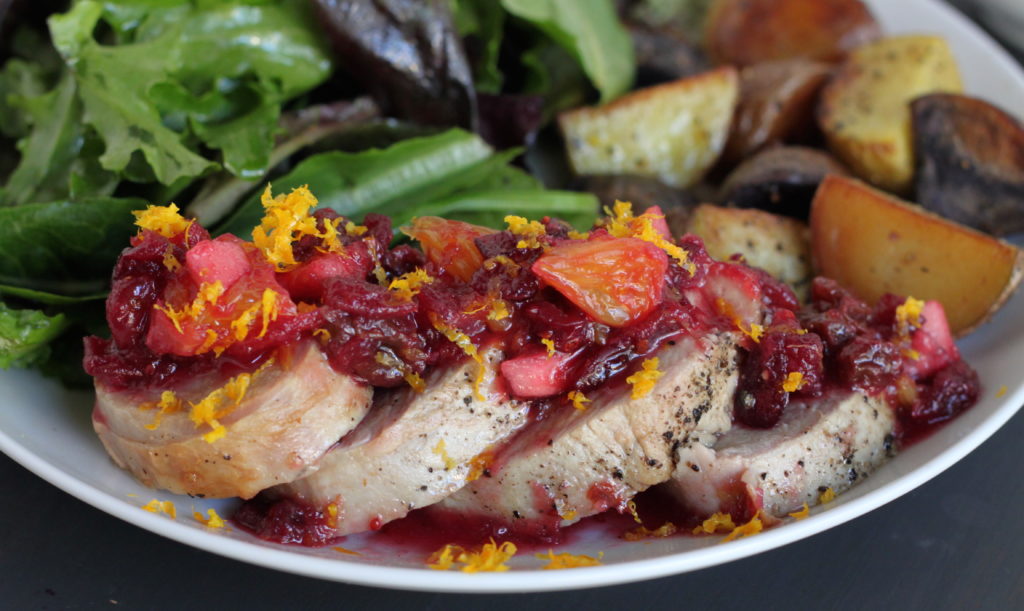
💥 Lowest price possible: on the Nutrition Coach Starter Package. Limited # left.

Cranberries are the fruit of a shrub that grows in marshes called ‘cranberry bogs’. Cranberries are small, round, and have a deep red color when ripe. These edible berries are mildly sweet, with a strong acidity and tart flavor. They are a good source of fiber, offer a range of vitamins and minerals, and are known for their antioxidant and anti-inflammatory properties. Fresh cranberries can be used in baking, added to smoothies, made into juice, jams or jellies, or even cooked in savory preparations. Cranberries are commonly enjoyed during fall and winter holidays.
Cranberries are a type of evergreen shrub that grows in acidic marshes in cool climates, such as parts of Canada and the US. Cranberries are farmed for the tart red berries they produce.
The cranberry shrubs produce flowers that are pollinated by bees. From the flowers, a round white berry grows. The berry turns deep red when ripe. These edible berries are mildly sweet, with a strong acidity and tart flavor that is made more palatable with the addition of sweetness.
Cranberries can be found in various forms: as jellies, jams or canned cranberry sauce; as cranberry juice; or as dried cranberries. Fresh or frozen whole cranberries are typically available in the fall and winter. Traditionally, in the US and Canada, they are eaten at Thanksgiving and / or Christmas dinners alongside roast turkey.
Cranberries are round, about the size of a small marble or large pea, and turn a deep red color when ripe.
You may find fresh cranberries in the refrigerated fresh produce aisle. Alternatively, seek out frozen bags of cranberries in the freezer section.
One cup of raw cranberries has 51 calories, 0.4 grams of protein, 13.4 grams of carbohydrates, 5.1 grams of fiber, and 4.4 grams of sugar.
Note: While cranberries are naturally low in sugar compared to other fruits, keep in mind that sugar is often added in preparations to balance out their tart flavor.
Cranberries are a good source of manganese, vitamin C, vitamin K, vitamin E, and copper.
Cranberries – particularly cranberry juice — are known for their ability to prevent or treat Urinary Tract Infections (UTIs). In addition, cranberries are heralded for their antioxidant and anti-inflammatory properties.
Some research suggests that cranberries may have additional health benefits ranging from immune support to cancer prevention. Research continues to explore the possible health potential of cranberries.
Fresh cranberries are typically sold in a bag, either fresh or frozen. If you can see through the package, take a peek at the berries inside: they should be deep red and generally consistent in color (no white berries), and they should be firm, not mushy or moldy.
Check the package for an expiry date – that goes for canned or dried cranberry products, too.
If buying pre-made cranberry sauce, be aware that most varieties are made with high fructose corn syrup, or similar sweeteners. You may find “gourmet” or “artisanal” varieties that contain less sugar and / or natural sweeteners. However, the best way to know what’s in your cranberry sauce is to buy whole cranberries and make the sauce yourself.
Cranberry juice deserves a similar note: cranberry ‘cocktail’ or cranberry ‘drink’ contains sugar and other ingredients besides cranberries, which you may prefer to avoid. If you want to drink cranberry juice for its health benefits, check the label and ensure you are buying 100% juice.
Store fresh cranberries in their package in the fridge and use before their expiry date. If you plan on storing them longer, keep them in the freezer, where they’ll last for about 3 months.
Store dried cranberries in an airtight container, and any canned cranberry products in the pantry. Once open, canned cranberries will last in the fridge for 4-5 days. As always, use them before the expiry date.
Fresh or frozen whole cranberries can be added to smoothies, used as a topping for oatmeal, or mixed into yogurt (along with a drizzle of maple syrup for sweetness if you like).
Cranberries are excellent in baked goods such as muffins, crisps and cobblers, pancakes, or cookies.
Cranberries play nicely with savory flavors, too: try topping baked brie with cranberry compote, adding dried cranberries to a wild rice salad, making a red wine cranberry sauce for beef, or roasting cranberries along with turkey, chicken, or duck and serving with winter vegetables.
At Thanksgiving and Christmas, cranberry sauce is a standard addition to the holiday meal. Many people simply use canned cranberry sauce, but this side dish is actually easy to prepare from scratch, and quite delicious when made from whole cranberries (homemade is better nutritionally, too).
Because cranberries respond well to sweet and savory flavors, home cooks have plenty of room to experiment with flavors: for example, try mastering a basic recipe then adding fresh herbs like rosemary or dried spices like star anise; a squeeze of fresh orange juice; a dash of bourbon or rye whiskey; a drizzle of maple syrup; or a few slices of fresh ginger.

Not your typical cranberry sauce from a can – thank goodness! Chunky, vibrant, rich with flavor and texture, and visually appealing – you’ll never want to use the canned version again.
Prep Time: 10 minutes Cook Time: 40 minutes Yield: 1.5 litres
For the sauce:
Add cranberries and maple syrup to a pot and bring to a boil. Lower heat to medium and simmer with a lid until skin pops on the cranberries and they begin to mush together – approximately 15-20 minutes.
When cranberries have popped open – stir in raisins to soften them in the heat along with orange zest, lemon zest, and ginger for about 3 minutes. Remove from heat.
Add remaining ingredients to the sauce – adding the orange juice slowly so the sauce isn’t too runny.
Mix together and serve immediately or refrigerate. The sauce can be warm or cold when served. Freeze remaining sauce if necessary.
For the pork:
Preheat oven to 425 degrees Fahrenheit.
Preheat a skillet with 1 tbsp extra virgin olive oil and add the pork tenderloin(s) to the pan. Brown each side of the loin(s) – approx. 30 seconds each side.
Place seared pork tenderloin(s) on a tinfoil lined baking sheet – cover generously with cracked pepper and drizzle 1 tbsp extra virgin olive oil on each pork tenderloin you use. Bake for 20 minutes – more time may be needed for more than 2 loins. Remove from heat when it’s cooked through and cover with the tin foil for 10 minutes to allow juices to settle.
Assembly:
Slice the pork loin into rounds and pour cranberry sauce over top. Optional – add some more orange and lemon zest for garnish.
Note: The cranberry sauce can be prepared 1-2 days in advanced and the recipe makes enough to cover 4 pork tenderloins.
Precision Nutrition’s Encyclopedia of Food expands every single month as we highlight new foods and showcase beautiful food photography. If you’d like to stay up to date, simply click this link. From there, we’ll send you a FREE copy of our recipe book. We’ll also let you know when new and delicious foods are added to the site.
Cranberries are the fruit of a shrub that grows in marshes called ‘cranberry bogs’. Cranberries are small, round, and have a deep red color when ripe. These edible berries are mildly sweet, with a strong acidity and tart flavor. They are a good source of fiber, offer a range of vitamins and minerals, and are known for their antioxidant and anti-inflammatory properties. Fresh cranberries can be used in baking, added to smoothies, made into juice, jams or jellies, or even cooked in savory preparations. Cranberries are commonly enjoyed during fall and winter holidays.